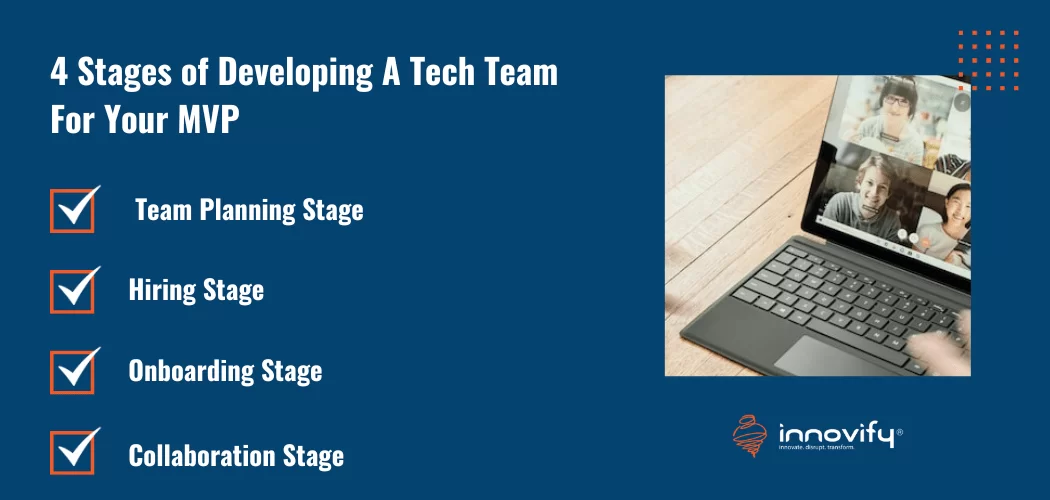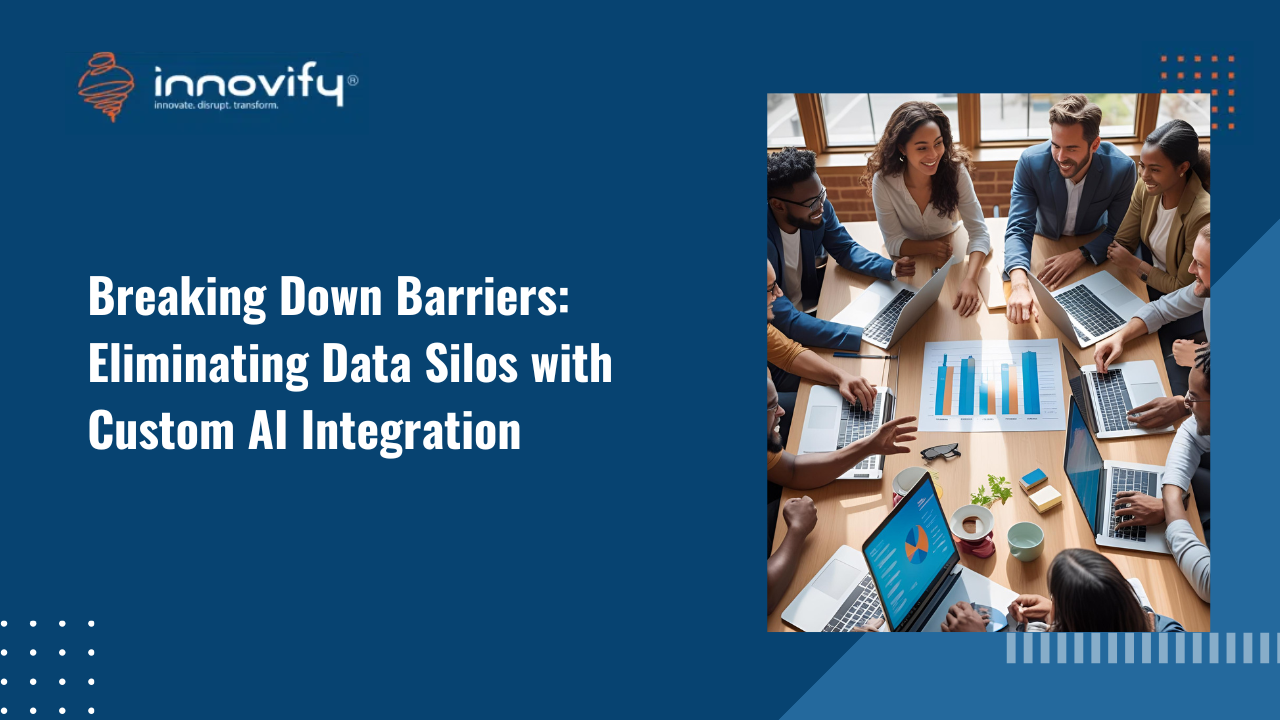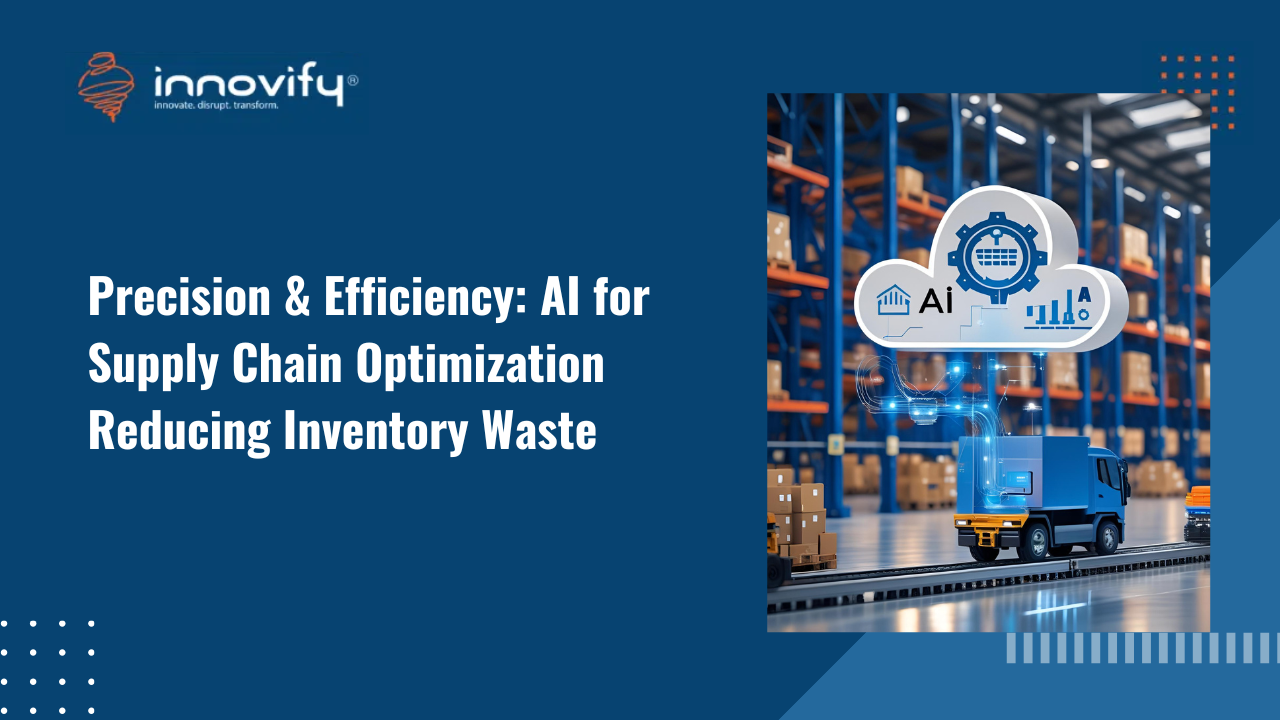Innovation
4 Stages of Developing A Tech Team For Your MVP
As a tech entrepreneur, you have a vision for your minimum viable product (MVP) that can change the game in your industry.
However, turning that vision into reality requires a dedicated tech team with the right skills, expertise, and experience. Developing an MVP is different from developing a full-fledged product, and it requires a unique set of strategies and approaches.
Let’s understand how it affects a development team.
How MVP Development Can Be Different for Your Team Than Full Product Development
The difference between developing an MVP and a full-fledged product also affects how you select your development team. Here are a few key considerations:
- Technical expertise: Since MVP development is faster and more focused, it requires a development team with expertise in rapid prototyping, lean development, and agile methodologies. They should be able to deliver the core functionality of the product quickly and efficiently while also maintaining high quality.
- Flexibility: Developing an MVP requires a team adaptable to changes in the product vision and scope. Unlike a full-fledged product, an MVP is designed to evolve and change based on user feedback and market testing. Therefore, the team must be open to feedback and ready to pivot the product strategy if necessary.
- Startup experience: Developing an MVP requires an entrepreneurial mindset and an understanding of startup culture. A development team with startup experience can bring a unique perspective and insight into the product development process, including the ability to work within tight timelines and budgets.
- Cultural fit: As with any development team, finding candidates who fit well with your team culture is crucial. However, this is especially important for an MVP development team, as the fast-paced and iterative nature of the process requires strong collaboration and communication.
4 Stages to Develop an Efficient MVP Tech Team
If you plan to assemble an MVP team, the following should be your approach.
1. Team Planning Stage
The planning stage sets the foundation for the entire project. During this stage, you must define the product vision, goals, and objectives.
You should also identify the core functionality and prioritize features required for your MVP. Similarly, define the technology stack, development methodology, and timeline for the project.
To perform the planning stage the right way, you should follow these steps:
- Define the product vision, goals, and objectives: Clarify the purpose of the product and what you hope to achieve with it. Ensure your team members understand the vision, goals, and objectives.
- Identify the core functionality and features: Determine what the product must do to deliver user value. Focus on the minimum features needed to solve the user’s problem.
- Define the technology stack: Choose the appropriate one based on your product requirements, team skills, and long-term goals.
- Define the development methodology: Select a development methodology that aligns with your product vision and goals.
- Define the project timeline: Establish a realistic timeline and set milestones to track progress.
While planning, you’ll also have to focus on creating a structure for your agile team. Typically, the agile team structure includes the following.
- Product owner: Responsible for setting the vision and prioritizing the product backlog. The product owner works closely with the development team to ensure that the product meets the customer’s needs.
- Scrum master: Responsible for ensuring the team follows the agile process and removing any obstacles hindering progress. The scrum master acts as a facilitator for the team and helps improve their performance.
- Development team: Responsible for developing and delivering the product incrementally. The development team is self-organizing and cross-functional, including all the skills needed to deliver the product. The development team members are Product Designers, UX Writers, Programmers, Testers, and UX Specialists.
- Stakeholders: Responsible for providing feedback on the product and ensuring that it meets their needs. The stakeholders can include customers, end-users, and business sponsors.
2. Hiring Stage
The hiring stage determines the success of the project. To develop an MVP, you need to hire a team that is capable of delivering the core functionality of the product quickly and efficiently.
Here is how to hire employees for your MVP development project:
- Define job descriptions: Clearly define the roles and responsibilities of each team member.
- Post job openings: Use job posting sites and social media platforms to attract potential candidates.
- Screen resumes: Evaluate resumes to determine whether the candidate has the necessary skills and experience.
- Conduct interviews: Ask questions that test the candidate’s technical skills, experience, and cultural fit.
- Select the best candidates: Choose the most suitable candidates based on technical skills, experience, and cultural fit.
3. Onboarding Stage
The onboarding stage ensures that the new team members are fully integrated into the project and the company. During this stage, you must provide access to tools, resources, and documentation that the team needs to start working on the project.
The following are the best steps to onboard new hires:
- Introduce the product vision: Ensure new team members understand the product vision, goals, and objectives.
- Introduce the development methodology: Explain the development methodology that the team will use to develop the product.
- Introduce the technology stack: Provide access to the tools and resources required to work with the technology stack.
- Provide access to documentation: Make sure that new team members have access to the relevant documentation, including project plans, user stories, and design documents.
4. Collaboration Stage
The collaboration stage ensures that the team works effectively together and that the project is progressing according to plan. During this stage, you need to establish a feedback process and ensure that the team members are communicating effectively.
Here are the best practices for team collaboration:
- Set up regular team meetings: Establish meetings to discuss progress, share ideas, and solve problems.
- Define communication channels: Define communication channels, such as chat or email, to ensure that team members can communicate effectively.
- Establish a feedback process: Establish a feedback process to ensure that team members can provide feedback on the product and the development process.
- Monitor progress: Monitor progress against the project plan and adjust the plan if necessary.
Shall You Hire In-House or Augment a Team?
Both approaches can suit you; of course, it depends on your approach. Here are the
highlights to help you make a decision.
In-house MVP Developers
In-house MVP developers are developers who are hired directly by your company to work on their minimum viable product (MVP) in-house, meaning they work in the same physical location as your company’s other employees. These developers may be hired as full-time employees or as contractors, depending on the company’s needs and resources.
Pros:
- Full control over the hiring process, team members, and development process.
- Team members have a deep understanding of the product vision, company culture, and values.
- Ability to provide a more cohesive team environment, including team-building activities and regular face-to-face interactions.
- Flexibility to make changes and pivots to the product vision and development process quickly and seamlessly.
Cons:
- Higher costs associated with hiring and maintaining an in-house team.
- Limited access to a diverse pool of talent, which may make it harder to find the right fit for your project.
- Longer hiring process, which may delay the MVP launch timeline.
- Limited scalability, as hiring and training new team members may take significant time and resources.
Augment Teams from a Reliable Provider
An augmented team of MVP developers is a team of developers who are hired on a temporary or project-based basis to work on a company’s minimum viable product (MVP). These developers are not full-time employees of the company but are instead contracted through a third-party provider, such as a software development agency or freelancer platform.
Pros:
- Access to a scalable and more diverse pool of talent, which can help you find the right fit for your project.
- Lower overall costs compared to hiring an in-house team, as there is no need to pay for office space, equipment, and benefits.
- Greater scalability, as the team can be easily scaled up or down depending on project requirements.
- Potential for faster development time, as the team is already trained and experienced in delivering MVPs.
Cons:
- Limited control over the hiring process and team members, which may lead to a disconnect in the product vision and development process.
- Possible communication challenges due to time zone differences, language barriers, or lack of face-to-face interactions.
- Possible concerns over intellectual property and data security.
Ultimately, whether to hire in-house MVP developers or augment teams from a reliable provider will depend on your specific project requirements, timeline, budget, and resources.
Both approaches offer distinct advantages and disadvantages, and the optimal choice will vary depending on your circumstances. If you are working with a tight budget, facing tight deadlines, or require specialized skills or knowledge, augmenting your team may be the better choice.
On the other hand, if you prioritize full control over the development process, product vision, and team culture, hiring in-house may be the best option for you.
Build Your MVP with Innovify
Be it team augmentation or in-house teams, building an MVP by yourself will bring several challenges, such as sprint planning, feature prioritization, technology scaling, etc.
If you want to avoid making mistakes and build your MVP correctly, consider outsourcing your MVP development project to Innovify.
Let’s connect to build your MVP.
FAQs
1. What are the development phases to complete the MVP?
The development phases for an MVP typically include ideation, design, development, testing, and launch. These stages may vary depending on the complexity of the product and the development approach used.
2. What is the first step a product team takes after shipping an MVP?
After shipping an MVP, the first step for a product team is to gather feedback from users and analyze the data to identify areas for improvement. This feedback can refine the product and guide future development efforts.
3. What is the agile way of working for MVP?
Agile working on an MVP involves breaking down the development process into smaller, iterative sprint cycles. This allows for frequent feedback and adjustments, leading to a more efficient and effective development process.
4. What are the success criteria for MVP?
The success criteria for an MVP may vary depending on the product and business goals, but generally, it should demonstrate that there is a viable market for the product, that users are willing to engage with it, and that it can be developed and launched within a reasonable timeframe and budget.
5. What comes after MVP in Agile?
After the MVP in Agile, the product team can continue to develop the product through iterative cycles, adding new features and improving existing ones based on user feedback and data analysis. This ongoing process is known as “product development”.




